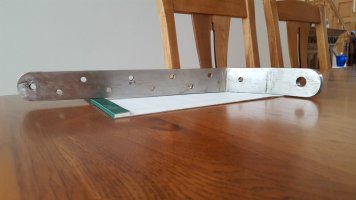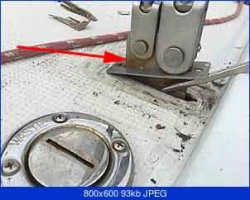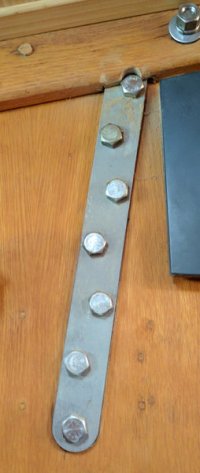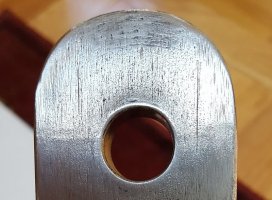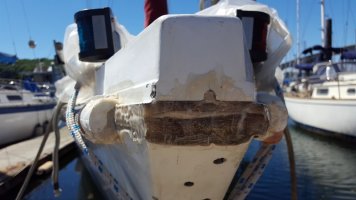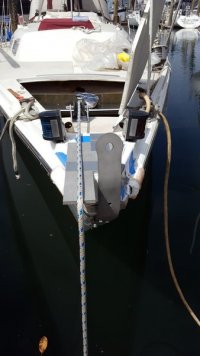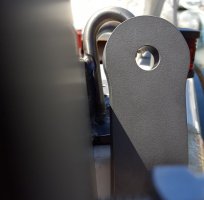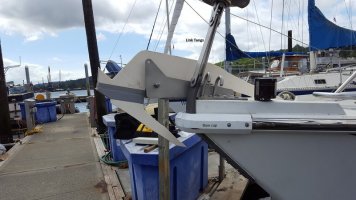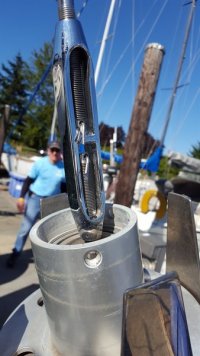After probably 37 years (the age of the boat), the bow or forestay chainplate is off for inspection. Although I got a good look at the outside and the edges in 2014, at that time there was only extremely difficult access to the backside of the screws. With the bow opened up for the windlass project, I am able to get in there and remove it relatively easily.
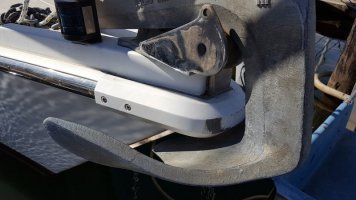
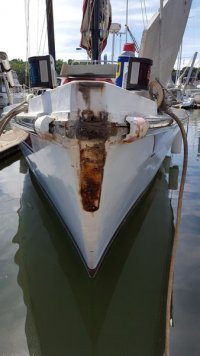
It is a 1/2-inch thick steel bar with two bends and 11 holes. It is 1-13/16 inches wide. There were nine 5/16ths slotted flat-head screws holding it on, all below the deck level on the point of the bow. All but one is 2 inches long. The top one is 1-1/4 inch long. One wood screw right between the bends was there, but not very tight. I didn't see any leakage into the bow, but the bedding was broken down as you can see in the pictures.

The bow cap is made of aluminum and while it was painted during the 2014 replacement of the rub rail, it shows the wear marks from the anchor chain. Newer boats have no bow cap and sport a nice narrow aluminum rub rail. I opted for a rail that is similar to the old one, but with a stainless steel insert. It covers the hull-deck joint easily and looks great (especially if I shine it up every couple years). The cap is necessary unless unless I do some cosmetic work at the point of the bow to cover that hull-deck joint. The pink filler is polyester resin which was used to provide some sealing for the ends of the rub rail and to raise a surface for the final bead of marine sealer to rest against. It wasn't too hard to break loose and we didn't do any damage to the cap.
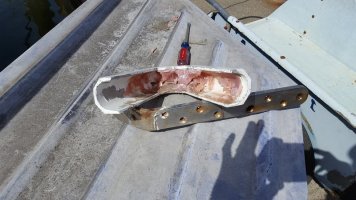
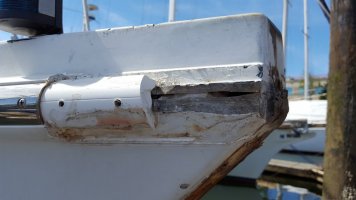


It is a 1/2-inch thick steel bar with two bends and 11 holes. It is 1-13/16 inches wide. There were nine 5/16ths slotted flat-head screws holding it on, all below the deck level on the point of the bow. All but one is 2 inches long. The top one is 1-1/4 inch long. One wood screw right between the bends was there, but not very tight. I didn't see any leakage into the bow, but the bedding was broken down as you can see in the pictures.

The bow cap is made of aluminum and while it was painted during the 2014 replacement of the rub rail, it shows the wear marks from the anchor chain. Newer boats have no bow cap and sport a nice narrow aluminum rub rail. I opted for a rail that is similar to the old one, but with a stainless steel insert. It covers the hull-deck joint easily and looks great (especially if I shine it up every couple years). The cap is necessary unless unless I do some cosmetic work at the point of the bow to cover that hull-deck joint. The pink filler is polyester resin which was used to provide some sealing for the ends of the rub rail and to raise a surface for the final bead of marine sealer to rest against. It wasn't too hard to break loose and we didn't do any damage to the cap.




